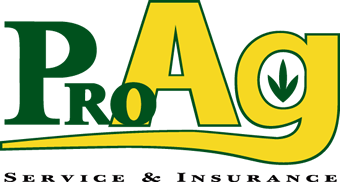- May 12, 2022
- Posted by: Daniel Lefstad
- Category: News
2024 Final Plant Dates, Prevent Plant, Late Plant & Replant Refresher
As the rains continue in most areas, below is some information regarding final planting dates, prevent plant, late plant and replants that you may find helpful. Please do not hesitate to call our office with questions.
For the final planting dates for crops in MN & ND please Click here. If there are any additional crops/counties you need additional information on, please give us a call at 218-935-2700.
The late planting period begins the day after the final planting date of a crop and ends 25 days after for most crops. Late planting guarantees are reduced by 1% for each day after the final planting date. The premium for any late planting acres remains the same as timely planted acres.
After the final plant date has passed, you may find yourself in a prevent plant situation, whether for a portion of a field or whole fields that are too saturated to plant. If this is the case, please contact our office to file a claim. A claim can always be withdrawn if you get the acres planted but it will give us the opportunity to go through your prevent plant guarantees and base acres available for prevent plant so you can make the best economic decisions for your situation.
Some things to keep in mind for prevent plant are:
- The PP acres must exceed the lesser of 20 acres or 20% of the crop in the unit. If you have enterprise units selected for a crop, you will need to meet the 20/20 rule by crop/county. If you have optional units selected for a crop, you will need to meet the 20/20 rule by crop/section.
- Maximum eligible PP acres by crop/type is the highest number of certified acres planted and/or prevent planted in the last 4 years.
- Prevent plant payments are based on the spring price and will not increase if the harvest price is higher.
- If you have added land, contact us to discuss as land added after the cause of loss is present may not be eligible for prevent plant.
- Prevent plant acres have a 1 in 4 rule – they would need to have been planted, harvested and insured in one of the past 4 years. The only exception to this is if they were not planted due to a normal rotation.
- PP on an existing forage stand is generally not paid unless you can show that you had it ready to plant (ie sprayed or worked up in the fall). It would also need to have been planted, harvested and insured in one of the last 4 years. If it was not planted in the last 4 year, you would need to prove the rotation is normal for your operation.
- Your prevent plant guarantee is based on the PP factors listed below times your MPCI guarantee unless you added the PP 5% buyup at sales closing.
Prevented Planting Payment Factors Crop PP Payment Factor PP Buyup Available Crop PP Payment Factor PP Buyup Available Barley 60% 65% Potatoes 45% 50% Canola 55% 60% Soybeans 60% 65% Corn 55% 60% Sugarbeets 45% 50% Drybeans 50% 55% Sunflowers 60% 65% Oats 60% 65% Wheat 60% 65% - If you have prevent plant, you may plant an approved cover crop that you can hay, chop or graze at anytime during the year without affecting your prevent plant payment. (Change from previous years). Crop insurance does not have any cover crop requirements but if one is planted, you need to follow NRCS/FSA guidelines.
- If you plant a second crop after the late plant period of your PP crop, you will reduce your PP payment on the first crop to 35% and take a APH hit of 60% of your approved yield in your APH database for that crop year. Cover crops planted after the final plant date or planting forage seeding after July 1st is allowable on PP ground, and your APH and PP payment will not be affected.
If you need to replant a field or part of a field, here are some things to keep in mind:
- CALL BEFORE YOU REPLANT All replanting must be reported and approved by your insurance company prior to starting, regardless of field size. Failure to do so will result in denial of the claim and could potentially affect your crop insurance coverage.
- You may have a replant claim if at least 20 acres or 20% of the unit (OU, EU) is damaged to the extent that replanting is required.
- You will be required to replant up to 10 days after the final plant date if the remaining stand will not produce 90% of the crops guarantee, unless it is physically not possible to replant.
- If it is 10 days after the final plant date, the insurance company will determine if it is feasible to replant or if the crop can be destroyed and planted to a 2nd crop.
- Replant self-certifications up to 100 acres by section is available as long as the company is notified prior to any replanting being completed.
Please contact our office at 218-935-2700 if you would like your prevent plant base acres, PP liability by unit or have any questions regarding your crop insurance coverage.
